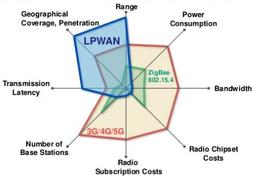
LAU Reject: Roaming Not Allowed Explained
Learn why a mobile station receives an LAU reject with the cause 'Roaming Not Allowed' and what it signifies.
Showing 20 posts (Page 6 of 13)
Advertisement

Learn why a mobile station receives an LAU reject with the cause 'Roaming Not Allowed' and what it signifies.
Explore a comparative analysis of LIN, CAN, FlexRay, and MOST, highlighting their specifications, key differences, and applications in automotive networks.

Learn about LiTRA (LTE Integrated Trunked Radio), a trunking communications solution based on the 3GPP standard and LTE networks, developed for high security and safety.

An overview of the LoRa frequency bands used in India, including the ISM band, channels, and network components for efficient IoT communication.

Explore LoRa wireless technology basics, including frequency bands, protocol stack, MAC layer, and LoRaWAN classes for M2M and IoT networks.

Prepare for your LoRaWAN interview with this comprehensive Q&A guide covering technology, architecture, frequencies, and more.

Explore the functionality, applications, and benefits of LoRaWAN gateways in enabling long-range, low-power IoT networks. Learn how they connect devices to the cloud.

Explore LoRaWAN sensor design, including key components like power supply, MCU, LoRa radio, and peripherals. Discover prominent vendors and manufacturers.

Explore the differences between LoRaWAN and Sigfox technologies for IoT networks, focusing on network architecture, data rates, and applications to help you choose the best solution.

Explore LPWAN gateway features, architecture, and manufacturers. Learn how LPWAN technology bridges cellular networks and indoor wireless tech for IoT applications.

Learn about LPWAN (Low Power Wide Area Network) technology, its architecture, key features, and benefits for IoT and M2M applications.
Explore the benefits and drawbacks of LTE technology, including data speeds, coverage, cost, and infrastructure requirements.

Explore the pros and cons of LTE Circuit Switched Fallback (CSFB), a technology used for voice calls in LTE networks using existing 2G/3G infrastructure.

Learn about LTE EPC interfaces (SGi, S1, S1u, S3, S4, S5, S6a, S11, S12), their functions, and roles in connecting network elements for data transfer and mobility.

Understand the LTE EPS Mobility Management (EMM) states: EMM-Deregistered and EMM-Registered, their transitions, and significance in UE reachability and service availability.
Explore LTE identifiers like PLMN ID, IMSI, GUTI, and others. Understand their structure, size, and purpose in LTE networks. Perfect for LTE engineers.
Understand Key Performance Indicators (KPIs) for LTE networks. Explore categories like accessibility, retainability, and integrity, and their role in optimizing network performance.

Explore the LTE paging procedure, including the mechanism, call flow diagram, S1AP and RRC messages. Understand how LTE networks efficiently notify idle UEs.

Explore the LTE protocol stack's user and control planes. Learn about the functions of each layer (NAS, PDCP, RLC, MAC, PHY, and RF) and their importance in LTE network operations.
A concise overview of LTE Quality of Service (QoS) and QoS Class Identifiers (QCIs), including QCI values 1-9, prioritization and how they are applied in an LTE network.
Advertisement